The sunbirds of Cape Town are to the local flowers (and humans) what hummingbirds are in the Americas: Small, bright, enchanting, and impossibly photogenic, but less impossible to photograph (thankfully, sunbirds perch to feed on nectar, rather than hovering, like their American counterparts). A sunbird safari is my only-slightly-tongue-in-cheek answer to the great safari quest of so many tourists in South Africa. The only people who say they are going on safari are tourists. South Africans themselves, off to see animals and birds in the bush, say they are going on holiday, or to a game reserve. They never go on safari. Still, it’s a big business in that country, and often prohibitively expensive (unless you self-drive to one of the many South African National Parks—known as SAN Parks, which I highly recommend; but I digress).
Sunbirds, meanwhile, are everywhere, and free to see, as long as you know what they like to eat.
Photography by Marie Viljoen and Vincent Mounier.
Above: The slopes of Kirstenbosch Botanical Garden are ideal for sunbird-spotting.
Here is a glimpse of the sunbird safari you can expect to experience if you visit Cape Town, the city that wraps itself around wild, fynbos-clad Table Mountain, whose pre-colonial name was Hoerikwaggo (the mountain in the sea).
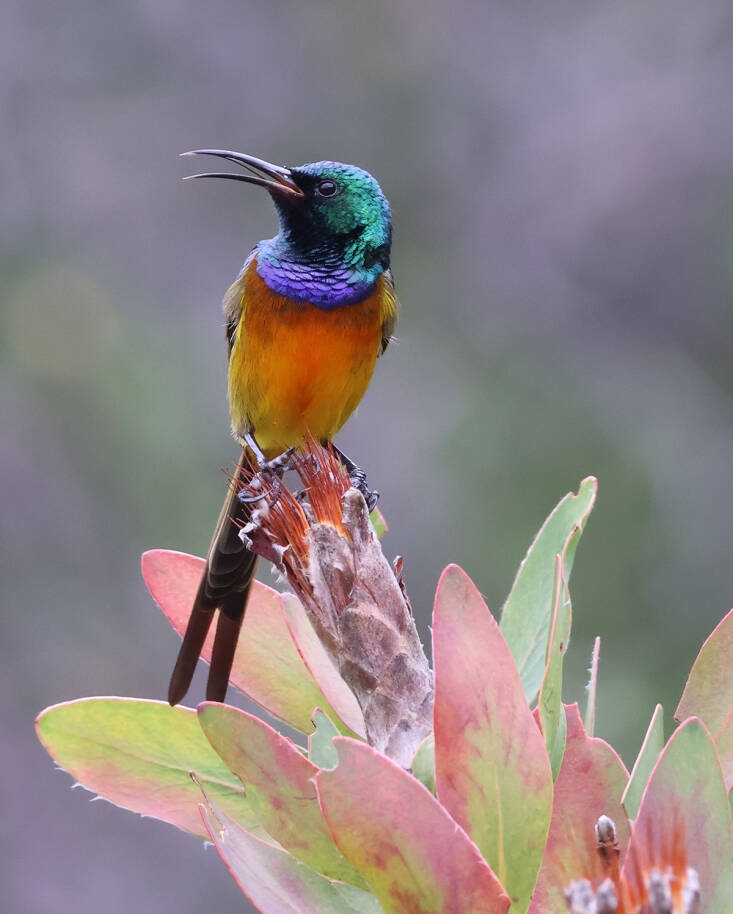 Above: A male orange-breasted sunbird on a spent protea flower.
Above: A male orange-breasted sunbird on a spent protea flower.
In Cape Town, the endemic and vivid orange-breasted sunbird tends to stay near the edges of the mountain itself. One of the best places to find these iridescent birds is on the slopes of Kirstenbosch National Botanical Garden. Often, you hear them before you spot them: their high, accelerated twittering seems fueled by sugar, and they talk to one another constantly.
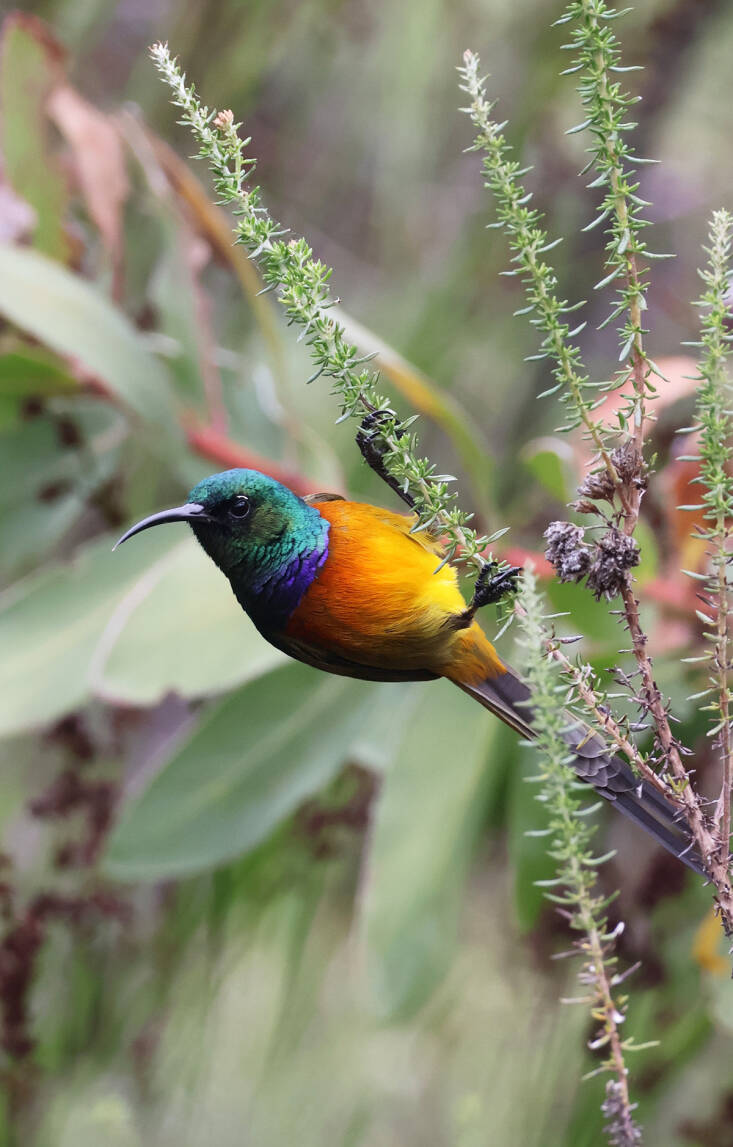 Above: An orange-breasted male sunbird at his finest, in breeding season (fall through spring).
Above: An orange-breasted male sunbird at his finest, in breeding season (fall through spring).
Like hummingbirds, sunbirds feed on nectar, but also (like hummingbirds) on spiders and very small insects. Their nectar of choice is usually from the flowers of indigenous Erica and Protea species, but they will also feed on other nectar-filled blooms and at feed sugar water feeders.
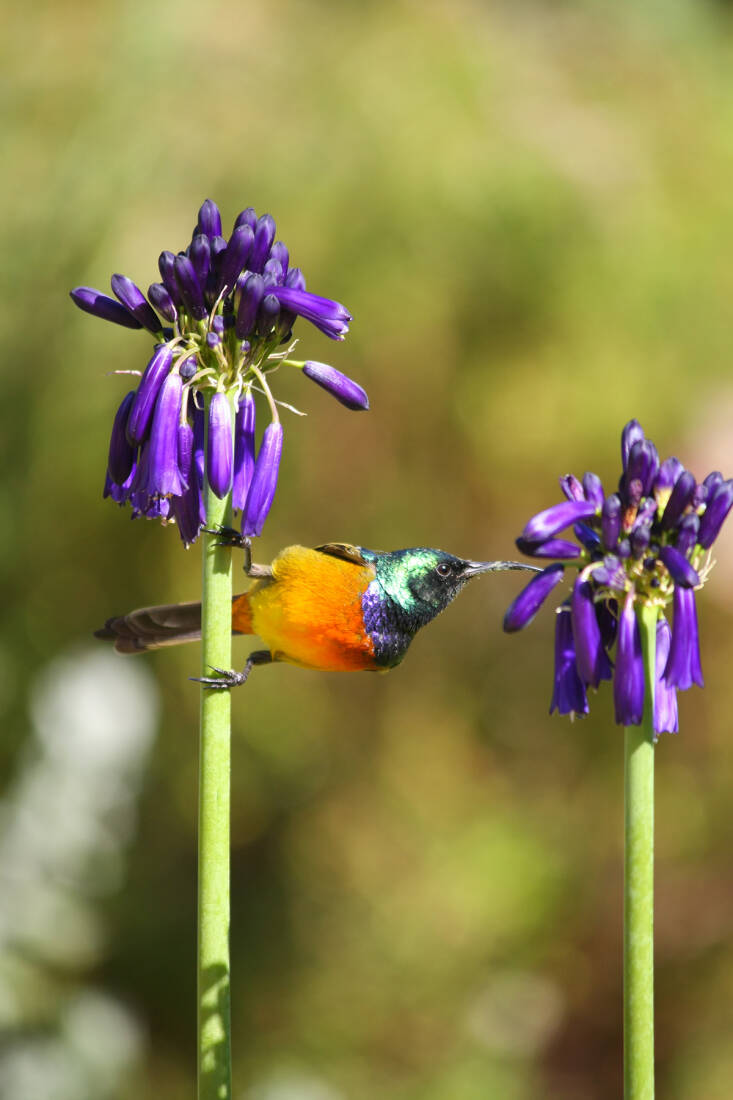 Above: The tubular flowers of native Agapanthus are also very attractive to sunbirds.
Above: The tubular flowers of native Agapanthus are also very attractive to sunbirds.
Male sunbirds’ feathers are at their most colorful in breeding season, which coincides with peak bloom for Erica and Protea species. It coincides with shoulder season for tourism, which means lower ticket prices: Visit from autumn—April and May—through spring—August and September—to see the brightest birds.
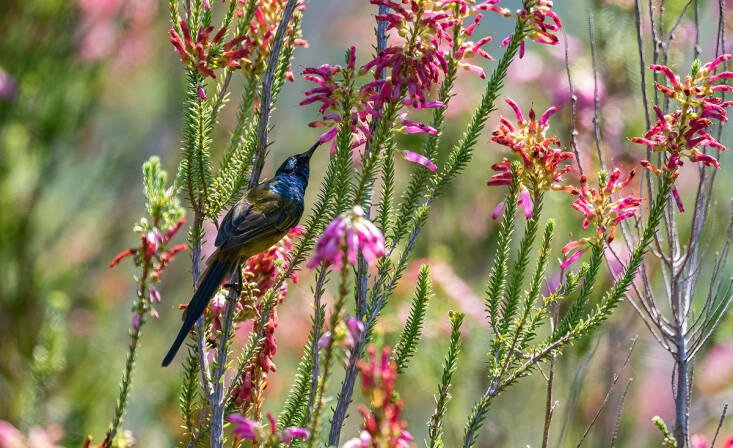 Above: An orange-breasted sunbird feeds on Erica flowers. Photo by Vincent Mounier.
Above: An orange-breasted sunbird feeds on Erica flowers. Photo by Vincent Mounier.
 Above: A southern double-collared sunbirds feeds on a pincushion protea (Leucospermum species).
Above: A southern double-collared sunbirds feeds on a pincushion protea (Leucospermum species).
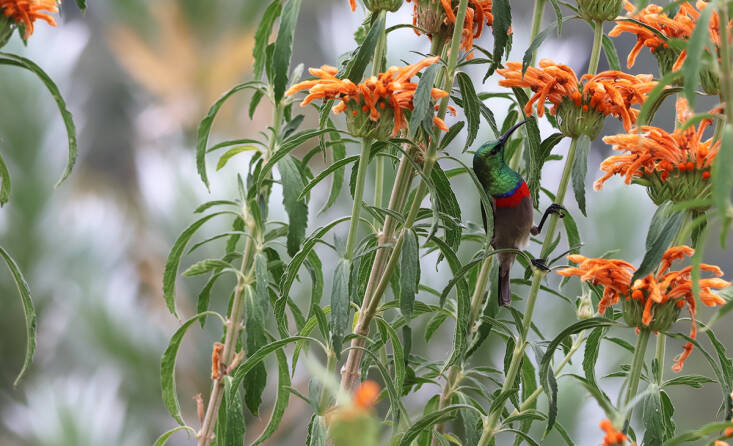 Above: the flowers of wild dagga (Leonotis leonurus) are irresistible to sunbirds.
Above: the flowers of wild dagga (Leonotis leonurus) are irresistible to sunbirds.
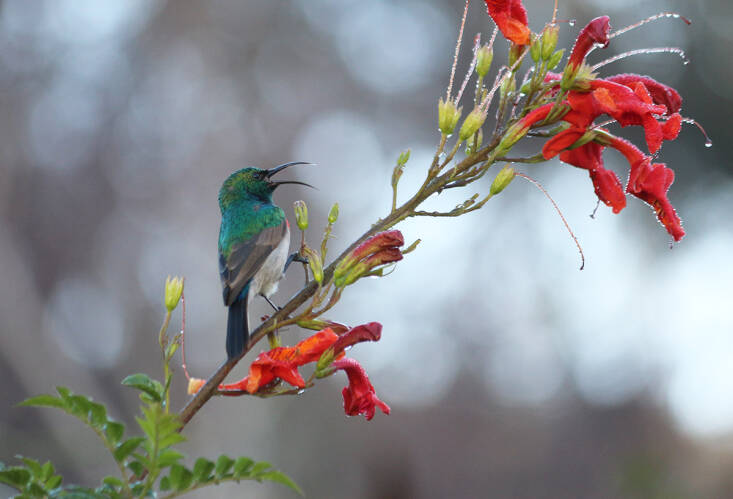 Above: A southern double-collared sunbird trills from Cape honeysuckle (Tecomaria capensis).
Above: A southern double-collared sunbird trills from Cape honeysuckle (Tecomaria capensis).
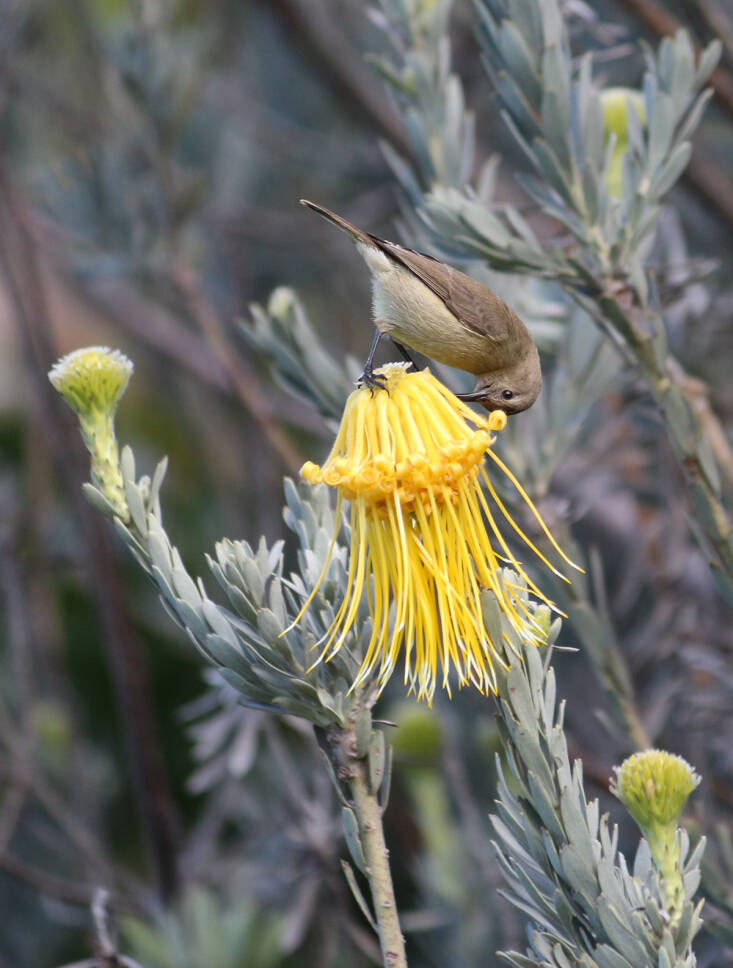 Above: Demure female sunbirds deserve attention, too.
Above: Demure female sunbirds deserve attention, too.
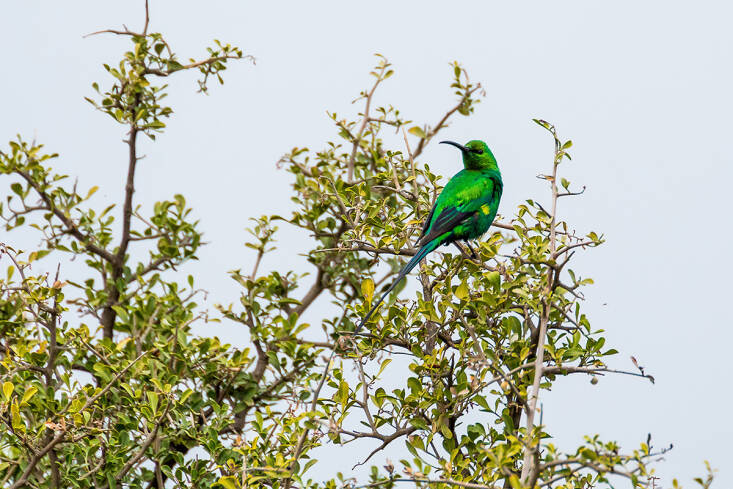 Above: A male malachite sunbird. Photo by Vincent Mounier.
Above: A male malachite sunbird. Photo by Vincent Mounier.
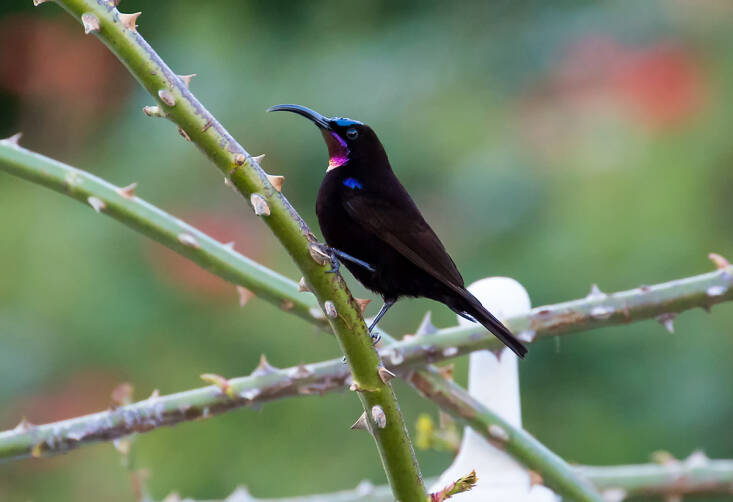 Above: An amethyst sunbird perches on rose canes near a sugar feeder, in autumn.
Above: An amethyst sunbird perches on rose canes near a sugar feeder, in autumn.
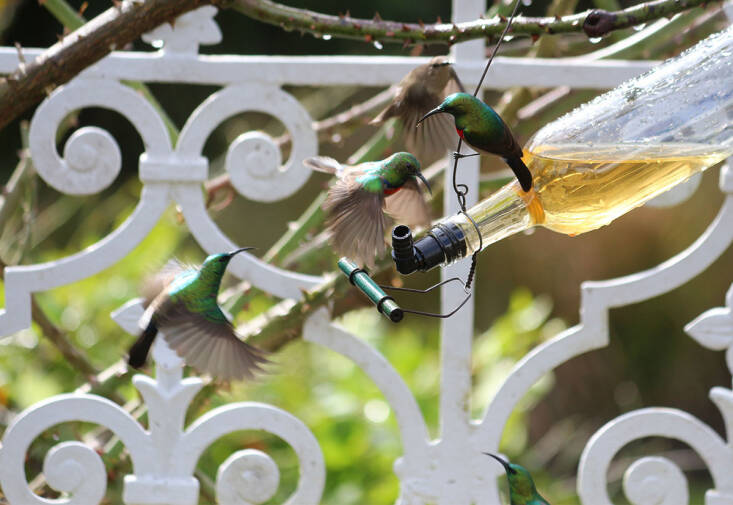 Above: Southern double collared sunbirds squabble at a sugar water feeder. Photo by Vincent Mounier.
Above: Southern double collared sunbirds squabble at a sugar water feeder. Photo by Vincent Mounier.
Clever guest house hosts and gardeners place sugar water feeders where sunbirds can be seen easily. The recipe is cane sugar with water, heated to boiling, and then cooled. This mixture should be changed regularly, and sugar substitutes must never be used. (A mass poisoning of Cape sugarbirds occurred in 2014 after a feeder was sweetened with xylitol.)
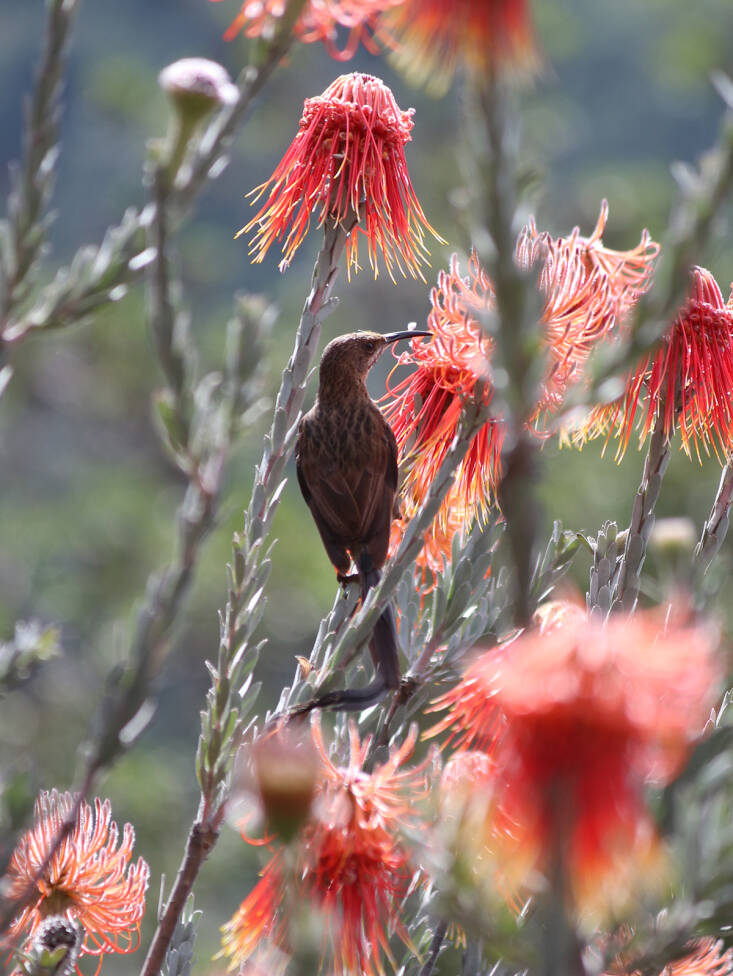 Above: Cape sugarbirds can be distinguished from sunbirds by their very long tails and muted plumage.
Above: Cape sugarbirds can be distinguished from sunbirds by their very long tails and muted plumage.
While sunbird safaris have yet to be marketed as such, there are good birding tours available for serious or new birders in Cape Town. Birding Africa is highly recommended. Still, a quiet hike on the mountain or at Kirstenbosch is sure to deliver that silvery chatter that tells you instantly that sunbirds are nearby and ready to delight.
See also:



